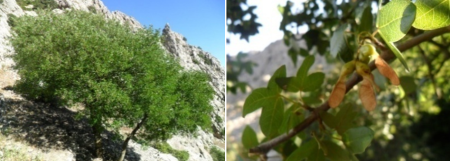
Objective:
The Montpellier maple (Acer monspessulanum L.) is a Mediterranean and West Asian species considered in Tunisia as rare with only three locations. The ecological importance of the species as a broadleaf and its effects on its natural ecosystem leads us to get a clear idea of the best way of propagation using seeds.
Context:
Acer monspessulanum is an 8m high tree located in Tunisia at the highest mountains of Serj, Bargou, and Zaghouan. This work is part of a doctoral thesis to study this species in Tunisia. Driven by the fact of its natural and ecosystem importance and its observed capacities of concurring hard and unusual rocky soils.
Contacts:
Hamdi Aouinti, hamdiiouinti@gmail.com, www.inat.tn
Issam Touhami, issam_touhami@yahoo.fr, www.inrgref.agrinet.tn
Abdelhamid Khaldi, khalditn@yahoo.fr, www.inrgref.agrinet.tn
Further information:
Pottier-Alapetite, G., 1979. Flore De La Tunisie : Angiospermes-Dicotylédones : Apétales -Dialypétales. 1e éd. Tunis : le Ministère de l'Enseignement Supérieur et de la Recherche Scientifique et le Ministère de l'Agriculture.